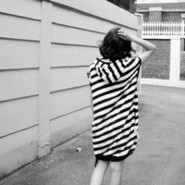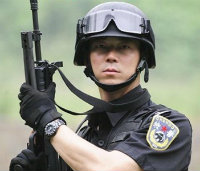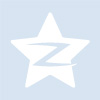Q
What's the size of Proton X50's battery?
The Proton X50 is equipped with a traditional 12V lead-acid battery. The battery has a capacity of 60Ah (with a cold-cranking amperage (CCA) of approximately 540A) and is maintenance-free. It is suitable for powering the vehicle's electronic system and starting motor. This battery specification is compatible with the factory-set 1.5T three-cylinder turbo engine and the intelligent start-stop system (if available). It is recommended to check or replace the battery every 2 - 3 years to avoid difficult starting or abnormal operation of electronic devices due to battery aging.
It should be noted that the Proton X50 is neither a hybrid nor an electric vehicle, so it doesn't have a high-voltage power battery pack. Its 12V battery is mainly used for low-voltage systems such as lighting, audio, and the ECU. If the vehicle is parked for a long time (more than two weeks), it is advisable to disconnect the negative terminal or use a battery charger for maintenance. When adding high-power audio or electronic devices, the battery's load capacity needs to be evaluated, and if necessary, upgrade to a higher specification (e.g., 70Ah). During regular maintenance, a voltmeter can be used for testing. Under normal conditions, the static voltage should be between 12.4V and 12.7V. If it is lower than 11.8V, the battery may need to be replaced promptly.
Special Disclaimer: This content is published by users and does not represent the views or position of PCauto.
Related Q&A
Q
Does the Proton X50 have Android Auto?
Yes, the Proton X50 does support the Android Auto feature. Users can pair their Android phones with the vehicle's infotainment system via a USB cable, enabling them to use applications like navigation, music, and calls on the car's head - unit, which enhances driving convenience. Besides Android Auto, the Proton X50 is also compatible with Apple CarPlay to meet the needs of iPhone users. Its 7 - inch central control touchscreen offers smooth operation and an intuitive interface design, giving it a strong sense of technology.
It's worth mentioning that the addition of Android Auto and Apple CarPlay makes the X50 more competitive in terms of smart connectivity, especially appealing to the young consumer group in Malaysia. Moreover, the Proton X50 is also equipped with other practical features such as voice control, a rear - view camera, and multiple driving mode options, further enhancing the comfort and safety of daily driving.
If you have any questions about the specific operation or compatibility of the car's infotainment system, it is recommended that you visit an authorized Proton dealer to experience the vehicle's functions in person or refer to the official manual for more detailed usage instructions.
Q
Does the Proton X50 have a sunroof?
Yes, the Proton X50 is indeed equipped with a Panoramic Sunroof, which is a highlight feature of this model. It's especially available in higher - spec versions like the Premium and Flagship. This panoramic sunroof can offer passengers a broader view and better lighting inside the car.
The panoramic sunroof not only enhances the luxury feel of the interior but also adds to the driving pleasure during the night or on sunny days. However, it's important to note that proper maintenance of the sunroof is crucial. Regularly cleaning the tracks and seals can prevent water leakage and abnormal noises.
Given Malaysia's hot climate, it's advisable to use the sunshade when parking the car for an extended period to reduce the temperature rise inside. Meanwhile, the sunroof's UV - protection design can also safeguard passengers from direct sunlight.
As a popular SUV in the local market, the Proton X50 is well - received by consumers for its features and cost - effectiveness. The addition of the sunroof further boosts its appeal. If you're interested in this vehicle, you can visit a nearby Proton showroom to experience its performance firsthand.
Q
Does the Proton X50 have paddle shifters?
Yes, the Proton X50 comes with paddle shifters on certain models, especially the higher - spec versions like the 1.5 TGDi Flagship. This model is equipped with a 7 - speed Dual Clutch Transmission (DCT) and offers the paddle shifter feature, allowing drivers to manually control gear shifts, enhancing driving pleasure and handling flexibility.
The paddle shifters are usually located behind the steering wheel. Drivers can shift gears quickly without taking their hands off the steering wheel, which is especially useful when taking corners or overtaking. It's important to note that the functionality of the paddle shifters may vary depending on the vehicle's configuration. It's recommended to check the specific configuration list of the model before purchasing.
Moreover, while paddle shifters are a great addition to enhance the driving experience, for daily commuting, the automatic mode is usually sufficient. The manual mode is more suitable for those who seek a more engaging driving experience.
As an SUV targeting the young market, the Proton X50 has made many improvements in terms of technology and driving experience. The paddle shifters are just one of them. Other features such as the Advanced Driver Assistance System (ADAS) and intelligent connectivity functions are also worth paying attention to.
Q
Does the Proton X50 have wireless charging?
Yes, some high - end models of the Proton X50 are indeed equipped with a wireless charging function. This feature mainly appears in the Flagship and Flagship X versions, which allows car owners to wirelessly charge their Qi - standard - compatible phones. However, it's important to note that this function may not be applicable to all phone models, especially some older devices or those that don't meet the Qi standard.
As an SUV targeting the young market, the Proton X50 comes with quite a rich set of technological features. Besides wireless charging, it also has an advanced driver - assistance system, a full - LCD instrument panel, and an intelligent infotainment system. These features give it a good competitive edge among vehicles in the same class.
For Malaysian consumers, the addition of the wireless charging function does enhance the convenience of daily driving, especially during urban commutes as it reduces the hassle of dealing with cables. But if you're considering buying the X50, it's advisable to first check if your phone supports wireless charging or visit a showroom to personally experience whether this function meets your needs.
In addition, although wireless charging is convenient, its charging efficiency is usually a bit slower than that of wired charging. So, if you need a quick charge urgently, you may still have to use the traditional USB port.
Q
How much luggage can fit in the Proton X50?
The Proton X50 offers a 330-liter luggage compartment, which is ample for daily use. You can easily fit several small to medium-sized suitcases or shopping bags in it. This makes it highly practical for regular family outings or short trips. If you need more space, the rear seats can be folded down in a 60:40 split. Once folded, the cargo capacity gets a significant boost, making it suitable for transporting longer or larger items like golf bags or small pieces of furniture.
In Malaysia, the Proton X50's compact SUV positioning gives it an edge in city driving and parking, making it more maneuverable. At the same time, it doesn't compromise on practicality. The luggage compartment has a wide opening, making it easy to load and unload items.
It's worth noting that the actual loading capacity can be affected by the shape of the luggage and how it's arranged. We recommend that car owners plan their space usage wisely. If you often need to carry a large amount of stuff, you might want to consider adding a roof box or a luggage rack to increase the cargo capacity.
Overall, the Proton X50 strikes a good balance between daily convenience and occasional heavy-loading needs in its space design, making it a great fit for Malaysia's diverse driving scenarios.
Q
What is the max power of Proton X50?
The maximum power of the Proton X50 depends on the engine version you choose. Among them, the 1.5-liter turbocharged gasoline direct injection (TGDI) engine version can deliver a maximum power of 177 horsepower and a maximum torque of 255 Nm. While the 1.5-liter turbocharged multi-point injection (MPI) engine version offers a maximum power of 150 horsepower and a maximum torque of 226 Nm. Both of these two engine versions are paired with a 7-speed dual-clutch transmission (DCT), providing excellent power performance and fuel economy.
As a popular B-segment SUV among Malaysian consumers, the Proton X50 not only has strong power but also comes with a wealth of technological features, such as the advanced driver assistance system (ADAS) and smart connectivity functions, which meet the modern drivers' needs for safety and convenience. It's worth mentioning that the engine technology of the X50 comes from the cooperation between Geely and Volvo, ensuring its reliability and advancedness. At the same time, Proton has also made targeted adjustments for the local market, making it more suitable for the road conditions and driving habits in Malaysia.
For consumers who value power and technology, the X50 is undoubtedly a choice worthy of consideration. Especially among models in the same class, its cost - performance ratio is particularly outstanding.
Q
How heavy is Proton X50?
The weight of the Proton X50 varies according to different vehicle configurations. The curb weight is approximately between 1,300 and 1,350 kilograms, specifically depending on the selected powertrain version and additional features. For example, models with a 1.5L turbocharged engine are slightly heavier than the entry - level version. The weight design of this vehicle takes into account the rigidity and safety of the body structure while also considering fuel economy. It falls within a reasonable range among compact SUVs.
For Malaysian consumers, the X50 has a moderate weight. It can provide a stable driving experience without significantly increasing fuel consumption, making it highly suitable for urban commuting and family use. Additionally, the vehicle's weight affects its handling and cornering stability. The Proton X50 has achieved a good balance in this regard through chassis tuning and the application of lightweight materials, resulting in a more agile driving feel.
If you're particularly concerned about the vehicle's weight, it's recommended to pay attention to its performance on different road conditions during a test drive to better evaluate whether it meets your personal needs.
Q
Do Proton X50 and Proton X70 have the same engine?
Although both the Proton X50 and Proton X70 are SUV models under Proton, their engine configurations aren't exactly the same. The Proton X50 is equipped with a 1.5 - liter turbocharged three - cylinder engine, which comes in a regular version and a performance version (TGDI). The maximum power of these two versions is 150 horsepower and 177 horsepower respectively, and it's paired with a 7 - speed dual - clutch transmission.
On the other hand, the Proton X70 offers two engine options: a 1.8 - liter turbocharged four - cylinder engine and a 2.0 - liter naturally aspirated four - cylinder engine. The 1.8T version has a maximum power of 184 horsepower and is also equipped with a 7 - speed dual - clutch transmission.
The differences in the engine design of these two cars are mainly reflected in displacement, number of cylinders, and power tuning. The X50 focuses more on fuel economy and compactness, while the X70 leans towards power output and driving experience.
For Malaysian consumers, when making a choice, they can consider their own needs. If you're after something small, agile, and ideal for city commuting, the X50 is a great option. If you need more space and stronger power, the X70 is more suitable.
Moreover, both of these cars adopt the technology from the cooperation between Proton and Geely, ensuring reliability and after - sales service. It's recommended that you take a test drive at a dealership before purchasing to experience their actual performance.
Q
Is the Proton X50 2WD or 4wd?
The Proton X50 offers two drivetrain versions in the Malaysian market: front-wheel drive (2WD) and four-wheel drive (4WD), depending on the selected vehicle configuration. The entry-level 1.5T Standard and 1.5T Executive versions are equipped with a front-wheel drive system, while the higher-configured 1.5T Premium and 1.5T Flagship versions come with a four-wheel drive system. This design allows consumers to choose the appropriate drivetrain according to their budget and needs.
The four-wheel drive version provides better grip and stability on slippery roads or in complex terrains, making it suitable for areas with frequent rainfall or poor road conditions. On the other hand, the front-wheel drive version excels in fuel economy and daily city driving.
As a compact SUV, the Proton X50 is well - loved by Malaysian consumers for its stylish appearance, rich configurations, and diverse drivetrain options. It can handle both urban commuting and occasional outdoor adventures.
For consumers considering purchasing the X50, understanding the characteristics of different drivetrains can help them make a more suitable choice based on their personal usage scenarios. It is also recommended to experience the differences between the two drivetrain versions during a test drive to ensure choosing the most suitable model.
Q
What segment does Proton X50 belong to?
The Proton X50 belongs to the B-Segment vehicles. The B-Segment usually refers to the sub - market of compact SUVs. Generally, vehicles in this segment are relatively compact in size, which makes them well - suited for daily urban commuting and parking. The Proton X50 has a length of 4330mm, a width of 1800mm, a height of 1609mm, and a wheelbase of 2600mm. Its overall size falls within the scope of B - Segment vehicles. Vehicles in this class are favored by many consumers due to their good flexibility, relatively affordable prices, and low operating costs. The Proton X50 also participates in the competition in this sub - market with its own features and configurations, offering consumers diverse choices.
Latest Q&A
Q
What is the cheapest 2024 Range Rover?
In the Malaysian market, the most affordable model of the 2024 Range Rover lineup is the Range Rover Evoque. The starting price of its entry - level version is around RM400,000, and the actual price may vary depending on the configuration, optional accessories, and dealer promotions. As the entry - level SUV in the Range Rover family, the Evoque retains the brand's iconic luxury design language and off - road capabilities. It is also equipped with an efficient turbocharged engine and advanced technological features, such as the Pivi Pro infotainment system and the Terrain Response all - terrain feedback system, making it a great fit for both city driving in Malaysia and occasional outdoor adventures. If you have a limited budget but still want to experience the luxury of Range Rover, the Evoque is a good option. Meanwhile, the Range Rover Velar in the same series is positioned a bit higher, with a starting price of approximately RM500,000, offering more spacious interiors and a wider range of features. When purchasing in Malaysia, it's advisable to compare the promotional offers from different dealers and take into account the long - term maintenance costs, as luxury cars generally have higher upkeep expenses. However, Range Rover has a good reputation for reliability and after - sales service in the local market.
Q
Will the Range Rover Evoque change in 2024?
Based on the current information, the 2024 Range Rover Evoque is expected to undergo some updates, but there may not be significant changes to the overall design. The updates will mainly focus on the optimization of technological features and the powertrain. For example, it might upgrade the infotainment system or incorporate more efficient mild - hybrid technology to meet global emission standards. In the Malaysian market, this vehicle is likely to maintain its popular position as a luxury compact SUV and adapt to local road conditions and consumer preferences. For instance, it could offer seat materials suitable for the tropical climate or an enhanced air - conditioning system. The Range Rover Evoque has always been known for its stylish design and off - road capabilities. The 2024 model may further enhance these features while maintaining the brand's consistent high - quality. Malaysian consumers can look forward to an even better driving experience through detailed improvements while retaining the existing advantages. As for the specific changes, we still need to wait for the official announcement for confirmation.
Q
What is the Range Rover Evoque 2024?
The 2024 Range Rover Evoque is a luxury compact SUV under Land Rover. It continues the brand's iconic refined design and outstanding performance, and is specifically designed for urban driving and mild off - road needs. This vehicle has attracted a lot of attention in the Malaysian market. The 2024 model is expected to be equipped with a more efficient mild - hybrid or plug - in hybrid system, which will further improve fuel economy while maintaining Land Rover's consistent all - terrain capabilities. It comes with the Terrain Response all - terrain feedback system, making it suitable for Malaysia's diverse road conditions.
In terms of the interior, the new car is expected to use high - end leather and metal trims, and be equipped with the latest Pivi Pro infotainment system, which supports wireless Apple CarPlay and Android Auto to meet the needs of tech enthusiasts. The body design continues the Evoque's classic floating roof and hidden door handles, highlighting a sense of fashion.
For Malaysian consumers, the compact size of the Evoque is very suitable for city driving. At the same time, its luxury features and brand premium also meet the local preference for high - end SUVs. It's worth mentioning that Land Rover has a well - established dealer network and after - sales service in Malaysia, providing reliable support for car owners. As an entry - level Land Rover model, the Evoque also gives more consumers the opportunity to experience the brand's luxury and performance.
Q
How much is a 2024 Range Rover Evoque?
The pricing of the 2024 Range Rover Evoque in Malaysia varies depending on the configuration. It's estimated to start from around RM280,000 to RM350,000. The exact price depends on the selected model (such as the S, SE, or HSE versions), the powertrain (like the 2.0-liter turbocharged petrol or diesel engine), and additional features (such as premium interiors and driver assistance systems).
This vehicle continues the Land Rover family's exquisite design. It comes equipped with the latest Pivi Pro infotainment system and the Terrain Response System, making it suitable for both city driving and light off - road adventures. In the Malaysian market, the Evoque is well - received for its luxury and practicality. Local agents also offer a variety of financial packages and warranty services, making it convenient for consumers to make a choice.
It's important to note that before purchasing, it's advisable to confirm the latest prices and promotional activities with authorized dealers, as the prices may be affected by exchange rates, taxes, or configuration updates. Additionally, the maintenance cost of the Evoque is relatively high, but the service packages provided by Land Rover Malaysia can help owners reduce long - term maintenance expenses.
Q
How often should a Mercedes GLC 2024 be serviced?
According to Mercedes-Benz's official maintenance recommendations, under normal operating conditions in Malaysia, the 2024 GLC should undergo regular maintenance every 10,000 kilometers or 12 months, whichever comes first. The hot and humid climate in Malaysia, along with the congested urban traffic, may accelerate the wear and tear of engine oil and filters. Therefore, it is recommended that car owners shorten the maintenance interval to every 8,000 - 10,000 kilometers. Special attention should be paid to checking the air - conditioning system, brake fluid, and battery status.
The turbocharged engine in this model has high requirements for engine oil quality. It is essential to use fully synthetic engine oil that meets the MB - Approval 229.51/229.52 standards. In addition to regular maintenance, it is advisable to check the wheel alignment and brake pad thickness every 20,000 kilometers. Before the rainy season, pay special attention to the sunroof drain pipes and anti - rust treatment of the chassis.
The Service Care package offered by authorized dealers in Malaysia usually includes 15 core inspection items, which comprehensively cover the inspection of the transmission system, electronic devices, and safety configurations. If you often drive long distances or in dusty environments, you may consider replacing the air filter earlier.
It should be noted that strictly following the maintenance manual not only helps maintain the vehicle's optimal performance but also extends the original factory warranty. For hybrid models, it is even more crucial to conduct special inspections of the high - voltage system on schedule.
View MoreRelated News

The all-new Proton X50 has sold over 6,000 units in a month and a half since its launch, becoming the champion in its segment.
RobertSep 18, 2025

2025 Proton X50 launched for 5 days and has received 8,000 orders, with 999 units delivered
RobertAug 1, 2025

2025 Proton X50 Facelift Debuts with New 1.5L Four-Cylinder, Priced from RM89,800
AshleyJul 28, 2025

Proton X50 Interior Revealed: A Practical Space Designed for Young Drivers
LienJul 3, 2025

2025 Proton X50 Facelift: Major Upgrades & Possible 4-Cylinder Engine!
RobertJun 13, 2025
View More


















Pros
Cons